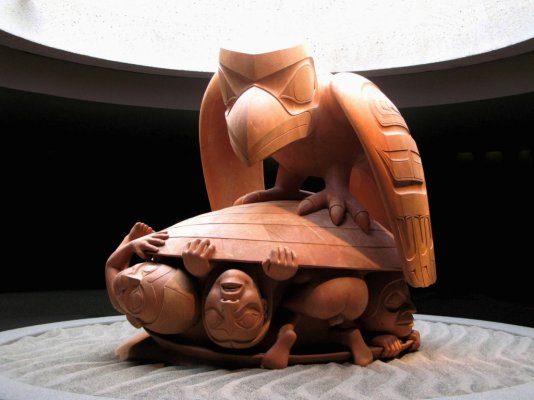The benefits of winglets are best realized at cruise speeds over longer flight times. That's why airlines like Southwest and Alaska resisted them for so long (they ain't cheap). Their flights tended to be shorter, regional flights and they felt the fuel savings from the winglet on such short flights would not justify their cost. However when Alaska started offering coast-to-coast service with their 737s they began installing winglets on the 737s that flew those routes because that's where they really realized the savings (up to six percent drag reduction at cruise). As fuel prices went up, 737 operators began to realize that even the lower fuel savings on shorter flights was becoming worthwhile. So now almost every 737 we make and almost every existing 737 than can accept them has winglets. APB has since adapted the same basic winglet for the 757--- American and Delta have retrofitted a number of their 757s with them. And APB now has a blended winglet that can be applied to 767s.
However you are correct in that the winglets do improve takeoff and climb performance, but that's not why they were developed for the 737. And you are also correct in that winglets can make the difference between being able to operate into some airports and not being able to. When GOL in Brazil wants to operate a 737-800 in and out of Rio de Janiero's smaller and more convenient airport, the plane must be equipped with winglets.
I can't answer your wing design question, other than to say that Boeing has traditionally built very strong wings. The original 737 wing was designed in the 1960s and was probably overbuilt but the current 737 models have an all-new wing design. But it's still obviously very strong.
The 737 winglet was developed for the BBJ (Boeing Business Jet). Many aerodynamicists at Boeing at the time did not believe in winglets and there was quite a fight over them until the president of the BBJ program told the nay-sayers to screw off and had them designed, installed, and tested anyway. The efficiency increase the BBJ was experiencing was undeniable and some airlines began pressuring Boeing to put them on the commercial 737s. Boeing has since changed its tune on winglets, and we have also designed a wing feature for our larger planes that accomplishes the same thing in a somewhat different way that we now use on some models of the 777, the 747-8, and the 787. This is the raked wingtip.
More than you wanted to know, I'm sure, but there you have it.



